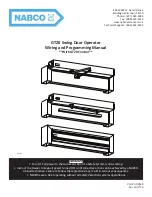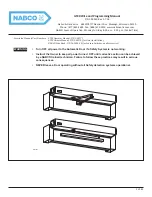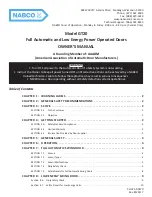
17
B. FACE SHIELD
To assemble the welding shield, insert the clear glass panel first, followed by the
dark glass panel into the recess in the shield, i.e. the clear glass MUST be on the
outside of the shield. Securing them with the plastic screws provided.
Slot the two pieces together as shown, and
enter the threaded end of the handle through
the holes provided. Thread on the plastic nut
and tighten.
Always maintain the welding mask in good
condition. If the clear glass protection lens
becomes badly pitted, sufficient to interfere
with vision, or cracked, have it replaced
immediately. Replacement clear and dark
lenses are available from your Clarke dealer
- see Parts Lists for details. NEVER use any dark
filter lens other than that provided by CLARKE
International, or one with the same certified ‘Optical class’ (degree of protection).
The shield should always be cleaned with a clean soft cloth after use, ensuring the lenses
are clean. Remove any dust that may have accumulated and store it in a safe place
where it cannot be damaged. NEVER use a shield that is
not
in perfect condition.
The clear glass panel should be replaced when it becomes badly pitted.
WARNING:
NEVER look at an electric arc without eye protection as this can injure the eyes
permanently. ALWAYS use a protection mask or welding helm
C. GAS SUPPLY
It is necessary to procure a cylinder of gas, suitable for the job in hand.
Locate the gas cylinder on the platform at the rear of the unit, and secure using
the chain provided.
A regulator is provided, complete with outlet pressure gauge for use with argon or
argon mix gas bottles. Should you require to use Carbon Dioxide, it will be necessary
for you to purchase an appropriate regulator with a female connector. Your Clarke
dealer will be happy to advise in this regard.
Ensure the outlet of the gas bottle is clean, then screw on the regulator and
tighten.
Always use the appropriate gas for the material being welded. If you are unsure,
consult a qualified tradesman, or a suitable reference book.
Attach the nut and tail to the gas hose, using the worm drive clip provided, then
screw the nut on to the regulator outlet and tighten.
Open the gas valve and screw in the regulator knob allow gas into the system to
check for gas leaks. If any are apparent, they must be rectified before proceeding.
Turn off the gas when satisfied the system is leak free.
Fig.2











































